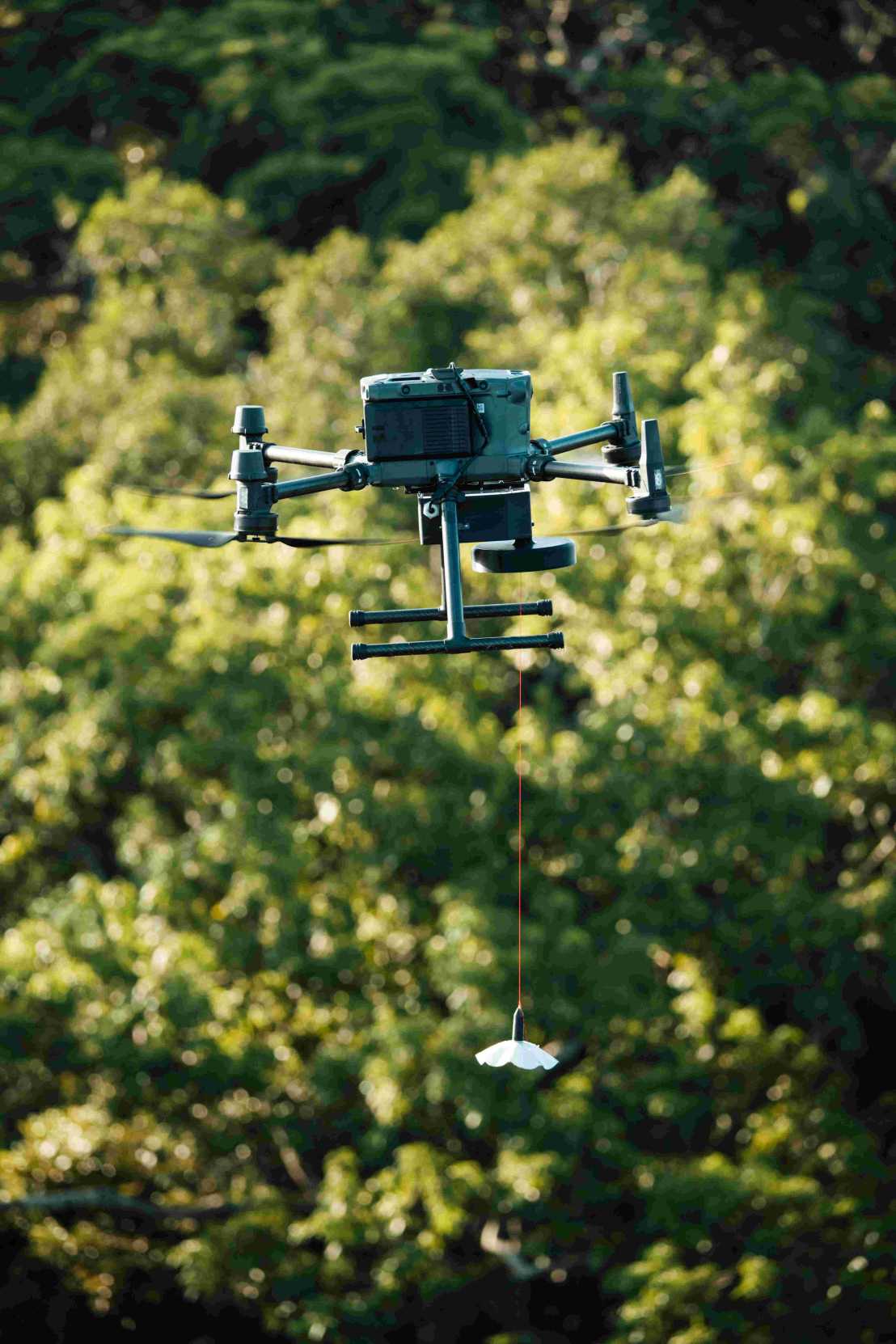Revolution in biodiversity research: Environmental Robotics Lab and Wilderness International launch pilot project with drones
Drones enable ground-breaking eDNA sampling in previously inaccessible regions

Cutting-Edge Technology for Conservation

For the new project, the Environmental Robotics Lab has developed a payload system for a Matrice drone to external page collect environmental DNA samples from tree canopies. Thanks to the drones used, samples can not only be collected much faster and more effectively, but also in places that are otherwise difficult to reach, such as the treetops of giant jungle trees. While there is a high density of data for the area close to the ground, the upper layers of the rainforest are still virtually unexplored in this respect, even though this is where 60-90% of biodiversity is found. This pilot project will enable German NGO external page Wilderness International to obtain important information on biodiversity in their protected areas in a short space of time and at low cost. The project gives the ERL the opportunity to test the new technique and compare the results with those of traditional methods.
“Every organism leaves traces in its environment by shedding and losing hair or secreting saliva and excrements. We are able to examine these traces for DNA strands, and determine the species from which the DNA originates,” explains Steffen Kirchgeorg, doctoral student at ETH Zurich. “Even the smallest amounts of DNA are sufficient, as the method is extremely sensitive. Ultimately, we hope to determine the true value of these biodiversity hotspots in order to effectively promote the protection of intact ecosystems and the restoration of degraded areas.”
For several years now, Wilderness International has been working with the local research organization external page Fauna Forever to collect biodiversity data in its conservation areas in the Amazon rainforest in Peru using conventional methods. This data is used to select new potential conservation areas, for example, as well as to make the results of their conservation work tangible for donors. Added to that it supports basic research in the field of biodiversity monitoring to provide information on which species are present in the areas studied, how populations develop over time, which positive and negative environmental influences they are exposed to and how certain animal species behave. Until the new method has proven itself, the results will be compared with those of conventional methods.
“Biodiversity monitoring via drone-based eDNA sampling and analysis is groundbreaking for Wilderness International's conservation work”, emphasizes Kai Andersch, CEO of Wilderness International. “We are currently testing this methodology during the monitoring of already protected areas and aspire to use it to revolutionize the selection of new conservation areas in the future. This will allow us to use our resources in a much more targeted manner and achieve valid results more quickly, so that we can protect primary forest areas even faster!’
Since the new method can be applied globally, this project is helping to open up new horizons in global biodiversity research. Following the test phase in Peru, Wilderness International will be able to apply this new research method in their conservation areas in Canada. Little biodiversity data is currently available for these forests - eDNA sampling could therefore close major knowledge gaps.
The drone for the project was sponsored by DJI and the Audi Environmental Foundation.